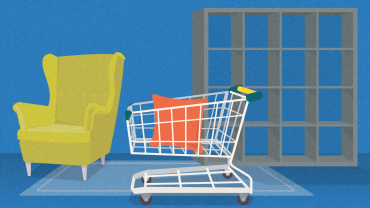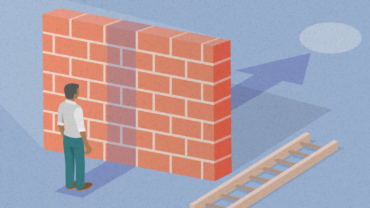Choice Architecture: Is Less Always More?

If consumers had the freedom to create their very own version of your product, build it up from the basics, and add whatever feature they desired, would they be able to create their idea of the perfect product? Or would they benefit more from starting with a product, all features included, and simply remove the ones they don’t need?
In this article, you’ll discover:
- Two strategies for letting consumers build their own product: scaling down and building up;
- How these two strategies can lead to very different results; and
- Which strategy can work best for your product
Oftentimes, a consumer inherently doesn’t know what they want. What a consumer wants (or thinks they want) is largely deemed based on context. But what is the context telling the consumer? Are they being guided towards or away from a certain choice? This context is also referred to as choice architecture.
One such context is the starting point of a product. Let’s look at one of the most popular food categories: pizza!

Discover ground-breaking ideas and fascinating solutions.
Research conducted by Levin et al (2002) tested out two strategies of pizza product design: building up and scaling down. To build up a product is to start from scratch (dough and sauce) and add further ingredients (toppings) until you reach your ideal pizza. To scale down a product is to start from having everything (dough, sauce, cheese and all toppings possible) and then start removing toppings until you reach your ideal pizza. Pretty straightforward.
If the consumer knew exactly what they wanted out of their pizza, these two strategies shouldn't lead to different outcomes. However, the outcomes were different.
If the consumer knew exactly what they wanted out of their pizza, these two strategies shouldn’t lead to different outcomes. If you don’t like pineapple on your pizza, you won’t add it (build up) and if someone else chooses pineapple, you’ll just peel it off (scale down).
However, these two strategies did lead to different outcomes. Researchers tested this intervention in multiple countries (U.S. and Italy) and found that consumers who were asked to “scale down” their pizzas ended up with significantly more ingredients and a pizza at a higher cost than consumers who were asked to “build up” their pizza.
What’s going on here?
The researchers explain their findings in terms of leveraging the choice architecture. In this case, the starting point of the product.
When building up a pizza, you start from scratch: the only thing you already own is the very basis of the product, in this case the dough and tomato sauce. With scaling down, you already own the entire pizza, with every topping on it. The value of a topping you already “own” is much more than the $0.50 reduction in cost of the pizza. As such, people simply don’t remove as many toppings.
In addition to these differences in value, people do not like to deviate from what’s already going on (the status quo bias). Using scaling down implies that the “status quo” for an option is to leave that option in unless there is a good reason to delete it.
Using scaling down implies that the “status quo” for an option is to leave that option in unless there is a good reason to delete it.
Think of a controversial pizza topping: pineapple. Some people love it, and some hate it, but the majority don’t really care. Someone with a strong negative opinion towards pineapple is likely to remove it as a pizza topping, whereas people who might not care about it much are not likely to remove it as a topping at all. The pizza will be sold with pineapple. Using building up implies that the “status quo” for an option is to leave that option out unless there is a good reason to add it. People who don’t like pineapple would never add it to their pizza. But in this scenario, people who do not really care about having pineapple on their pizza are not very likely to add it.
Only people who have a strong positive opinion about having pineapple on their pizza will add it. The pizza will most often be sold without pineapple in this case. These different statuses lead to very different outcomes!
Using building up implies that the “status quo” for an option is to leave that option out unless there is a good reason to add it.
The toppings to be added or removed could just as easily be product features of a car, computer, or treadmill, as tested by Park et al (2000). For these luxury items, it was also found that scaling down led consumers to buy more features, and therefore more expensive products. Cars that came with the “full package” before the consumer scaled them down ended up selling for a higher price with many more features than the cars that required the customer to “build them up.”
Whether it‘s a pizza or a car, the product starting point matters! So should you always add more features?
Of course, the product features should aid towards the optimisation of your product. It makes sense to have additional pepperoni on a pizza. It makes sense to have a car with heated seats. But when features do not make sense, they may add little value, and potentially detract value.
One such example of value detraction is combining features that are simply too counterintuitive or go against personal preferences. Since the dawn of time (or pizza) there has been a heated debate about adding pineapple, with both camps arguing strongly for, or against. Knowing that pineapple comes with a pizza, even though it can be removed, may turn some customers away in disgust. The additional feature actually detracts value from the product.
Key Takeaways:
- According to behavioral science, the best strategy to let consumers design their own product is to have them scale down features, leading to higher sales prices.
- Scaling down is a very effective way of leveraging the choice architecture, as consumers already feel like they own the product and its features.
- Features do have to be intuitive and make sense for the product; if the feature is too counterintuitive or controversial, it may detract from the overall perceived value of the product.




